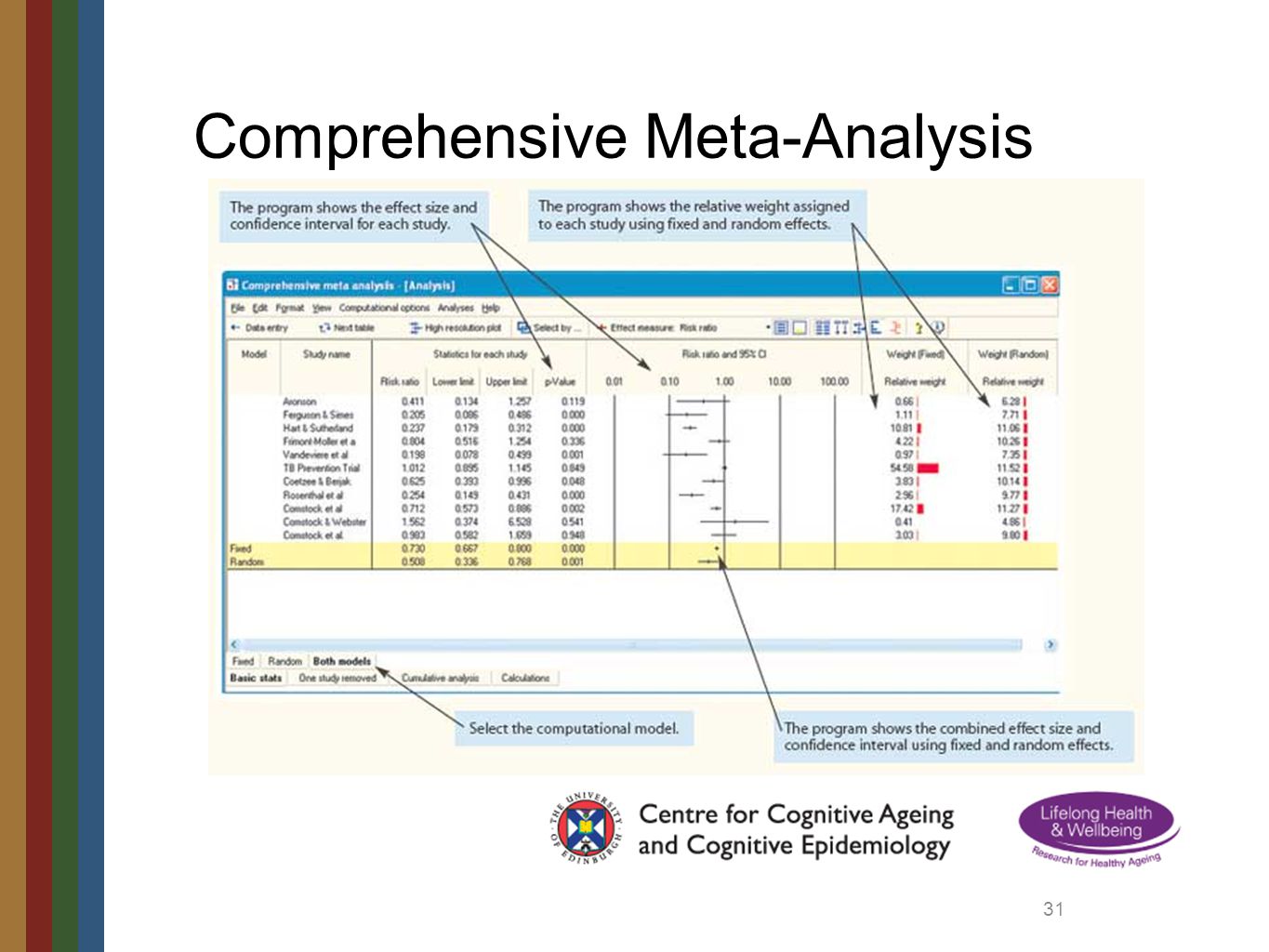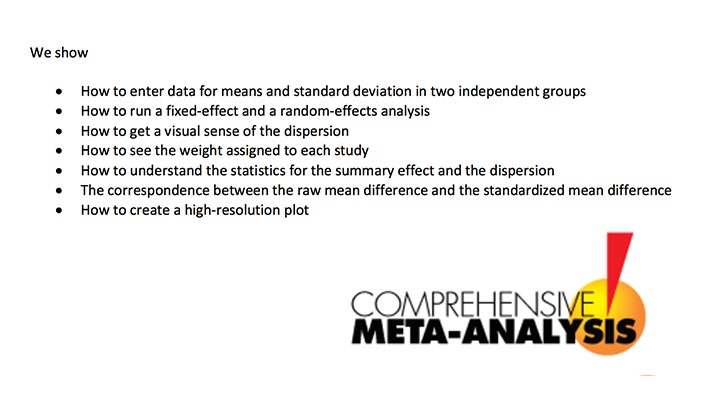

Meta-analyses are often, but not always, important components of a systematic review procedure. For example, Wanous and colleagues examined four pairs of meta-analyses on the four topics of (a) job performance and satisfaction relationship, (b) realistic job previews, (c) correlates of role conflict and ambiguity, and (d) the job satisfaction and absenteeism relationship, and illustrated how various judgement calls made by the researchers produced different results. For instance, a meta-analysis of the same RCTs on the efficacy of local anesthesia and meta-regression of observational studies on the effects of meat consumption with, respectively, seven and eight meta-analytic techniques reported different p values of obtained average ATEs. This makes meta-analysis malleable in the sense that these methodological choices made in completing a meta-analysis are not determined but may affect the results.
#Comprehensive meta analysis how to
In performing a meta-analysis, an investigator must make choices which can affect the results, including deciding how to search for studies, selecting studies based on a set of objective criteria, dealing with incomplete data, analyzing the data, and accounting for or choosing not to account for publication bias. For example, if there are two groups of patients experiencing different treatment effects studies in two RCTs reporting conflicting results, the meta-analytic average is representative of neither group, similarly to averaging the weight of apples and oranges, which is neither accurate for apples nor oranges. Meta-analysis has also been criticized for averaging differences among heterogeneous studies because these differences could potentially inform clinical decisions. If individual studies are systematically biased due to questionable research practices (e.g., p-hacking, data peeking, dropping studies) or the publication bias at the journal level, the meta-analytic estimate of the overall treatment effect may not reflect the actual efficacy of a treatment. However, there are some methodological problems with meta-analysis.

Not only can meta-analyses provide an estimate of the unknown effect size, it also has the capacity to contrast results from different studies and identify patterns among study results, sources of disagreement among those results, or other interesting relationships that may come to light with multiple studies. Meta-analytic results are considered the most trustworthy source of evidence by the evidence-based medicine literature. The aim then is to use approaches from statistics to derive a pooled estimate closest to the unknown common truth based on how this error is perceived. Meta-analyses can be performed when there are multiple scientific studies addressing the same question, with each individual study reporting measurements that are expected to have some degree of error. A meta-analysis is a statistical analysis that combines the results of multiple scientific studies.


 0 kommentar(er)
0 kommentar(er)
